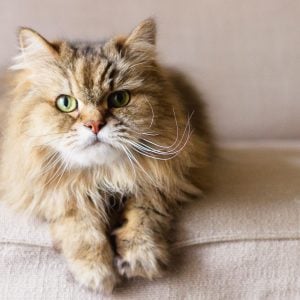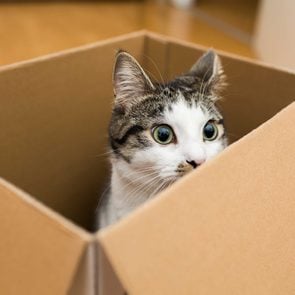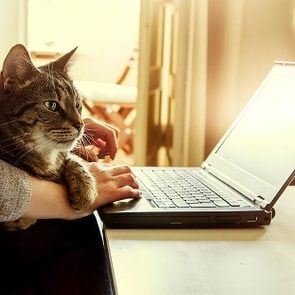Why Do Cats Wag Their Tails?
Updated: Jun. 27, 2022
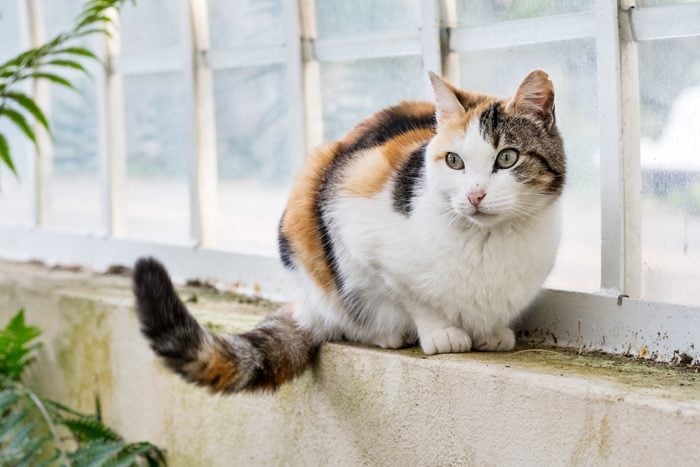
Decode the meaning behind your cat's wagging tail.
Cats are mysterious creatures who often leave their owners asking questions about their curious behaviors: Why do cats knead you during snuggle time on the couch? Why do cats rub against you? And why do cats wag their tails?
Experts say that when your favorite feline’s tail starts moving, there’s a reason. Of course, decoding cat behavior may require a little assistance. To help you out, we asked an animal behaviorist to explain how to decode cat body language.
Do cats wag their tails just like dogs?
There’s a difference between the way dogs wag their tails and the tail motions feline owners are familiar with, says Mikel Maria Delgado, a certified applied animal behaviorist and certified cat behavior consultant with pet site Rover. “We usually refer to cats as swishing their tails, as the movement is not quite the same as a dog’s wagging tail,” she says. “The meaning of the tail movements can be quite different in cats.”
To figure out what a cat wagging its tail means, you need a good understanding of your cat.
“In general, a cat swishing their tail is indicating some level of excitement, which can be good or bad, depending on the circumstances,” says Delgado. “Some cats are also just more ‘swishy’ in general, so it’s good to observe your cat carefully when they are swishing their tail to help you determine how they might be feeling.”
So step one to understanding why cats wag their tails: Read up on cat body language. Learn, for instance, the signs your cat is secretly mad at you and how to tell if your cat is depressed.
Why do cats wag their tails while lying down?
Cat owners have no doubt seen this before: While lying down—on the back of the sofa or on your lap—your kitty is swishing its tail. Like most cat behaviors, this one is tough to decode. What your cat wagging its tail means in this instance really depends, says Delgado.
“But since it generally indicates some level of excitement or arousal, it would suggest that the cat is not totally relaxed,” she says. “They might be conflicted: Maybe there’s an irritating sound or they want attention, but only in a specific way.”
Why do cats wag their tails while being pet?
If your cat is moving its tail back and forth while you’re petting it, it could be overstimulated, says Delgado.
“[It could mean] that he is starting to become irritated from petting,” she explains. “It could also be where you are petting them, or it could be that they have just had enough of petting in general. I would give your cat a break from petting if they are tail-swishing when handled.”
Is a cat wagging its tail good or bad?
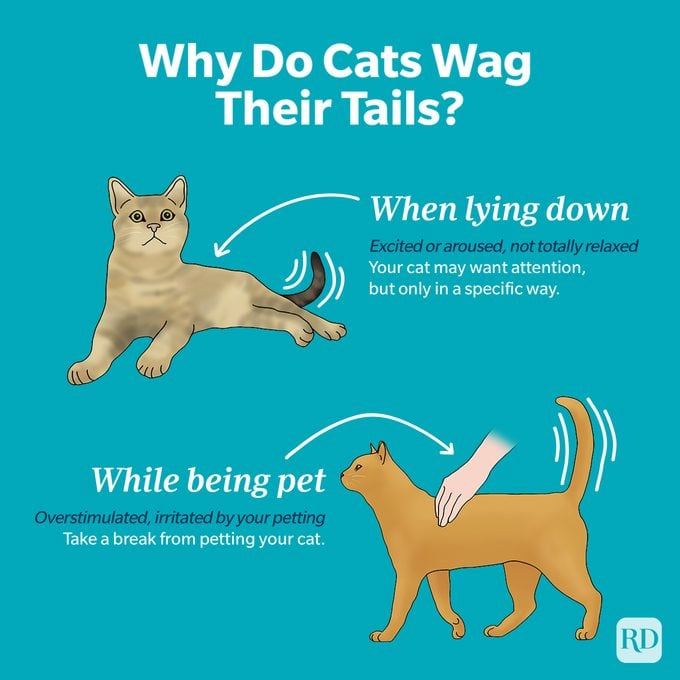
Ask a pet behaviorist, “Why do cats wag their tails?” and “Why do cats purr?” and you’ll get the same answer: to communicate.
“You should use that information to help you understand how your cat is feeling,” Delgado says. “If they are staring out the window at another cat and swishing their tail, they may be frustrated or excited. If you are petting them and they swish or wag their tail, it likely means they are irritated.”
In short, it’s all about observing your cat and picking up on its clues.
“Keep in mind: You can’t just go by the tail,” she warns. “Look at what is going on in the environment, and look at your cat’s entire body language. Do they seem relaxed? Are they blinking their eyes, laying stretched out, purring, or kneading? Are they tense with a tight body that is hunched up? Are they worked up with puffed fur and vocalizing? Those clues can help you better understand what your cat’s tail swish means.”
Cats, like their humans, are complex beings, so treat them as such. “Just like us, cats can have mixed feelings or change opinions quickly,” Delgado says. To understand your furry friend, be sure you’re paying attention. And be sure to boost your feline know-how by brushing up on what it means when cats eat grass and finding out why cats sleep so much.
Source:
- Mikel Maria Delgado, certified applied animal behaviorist and certified cat behavior consultant with Rover

